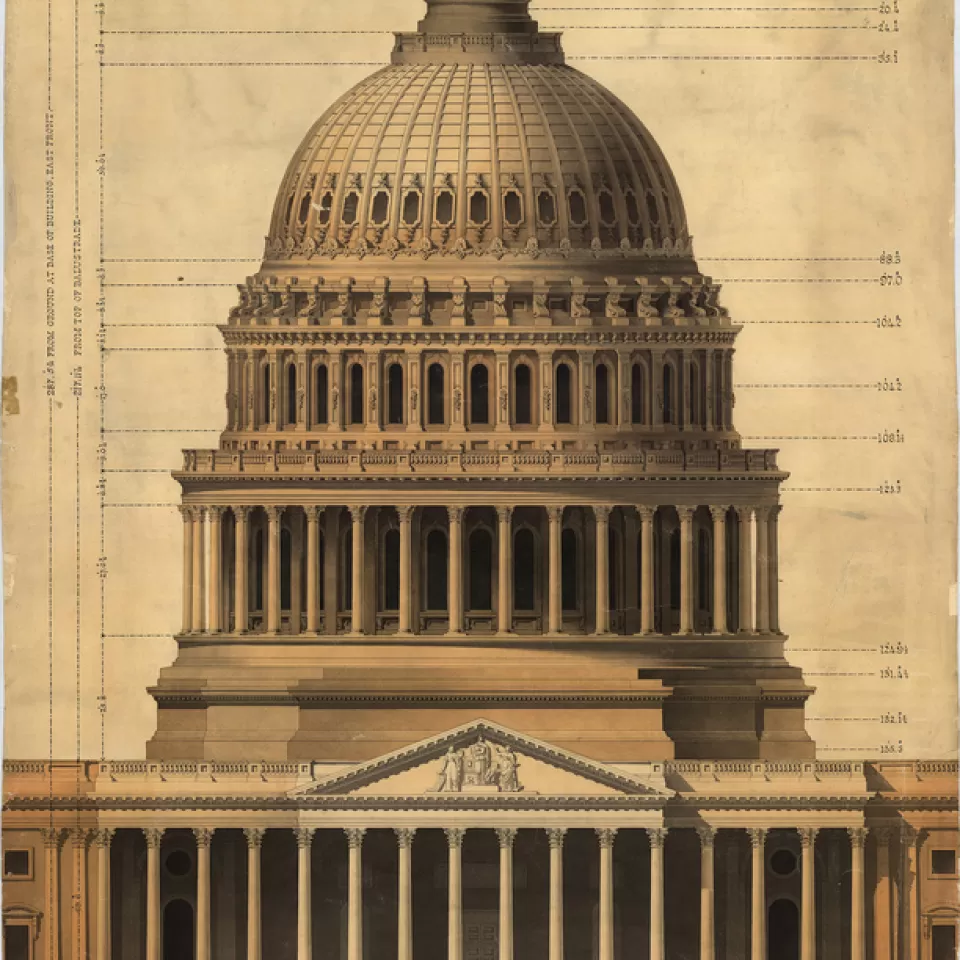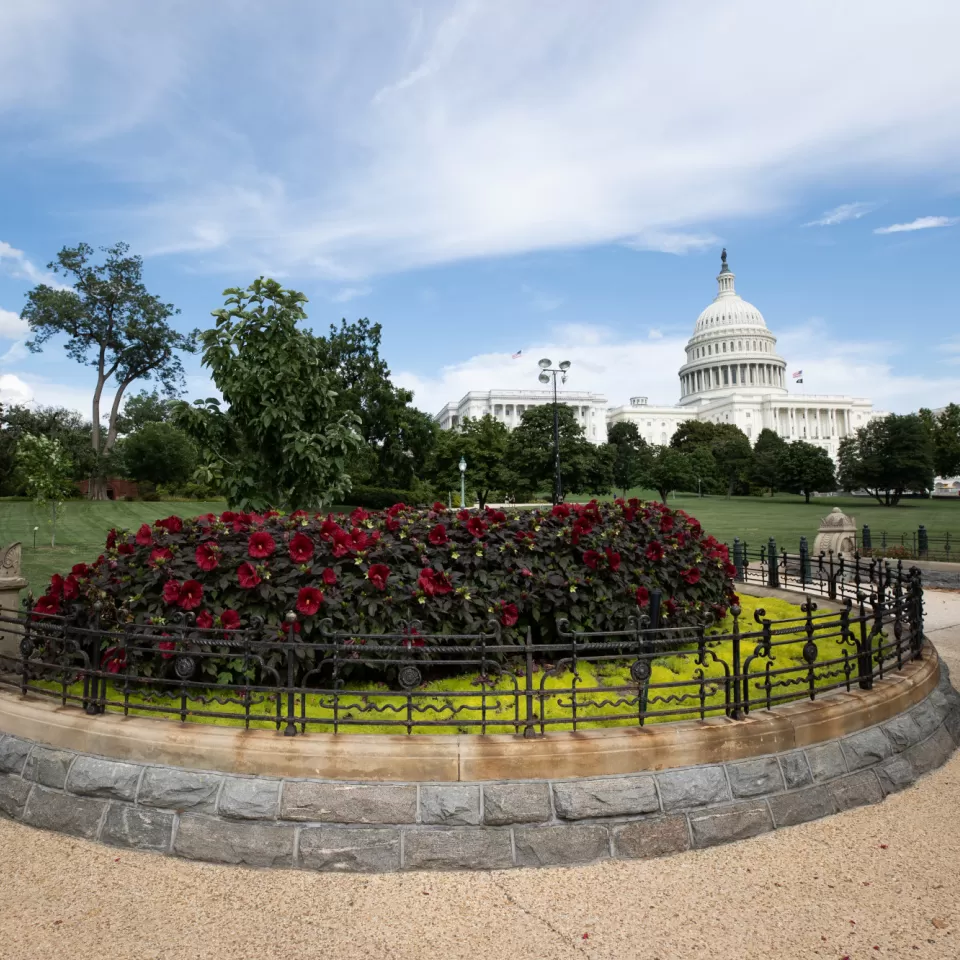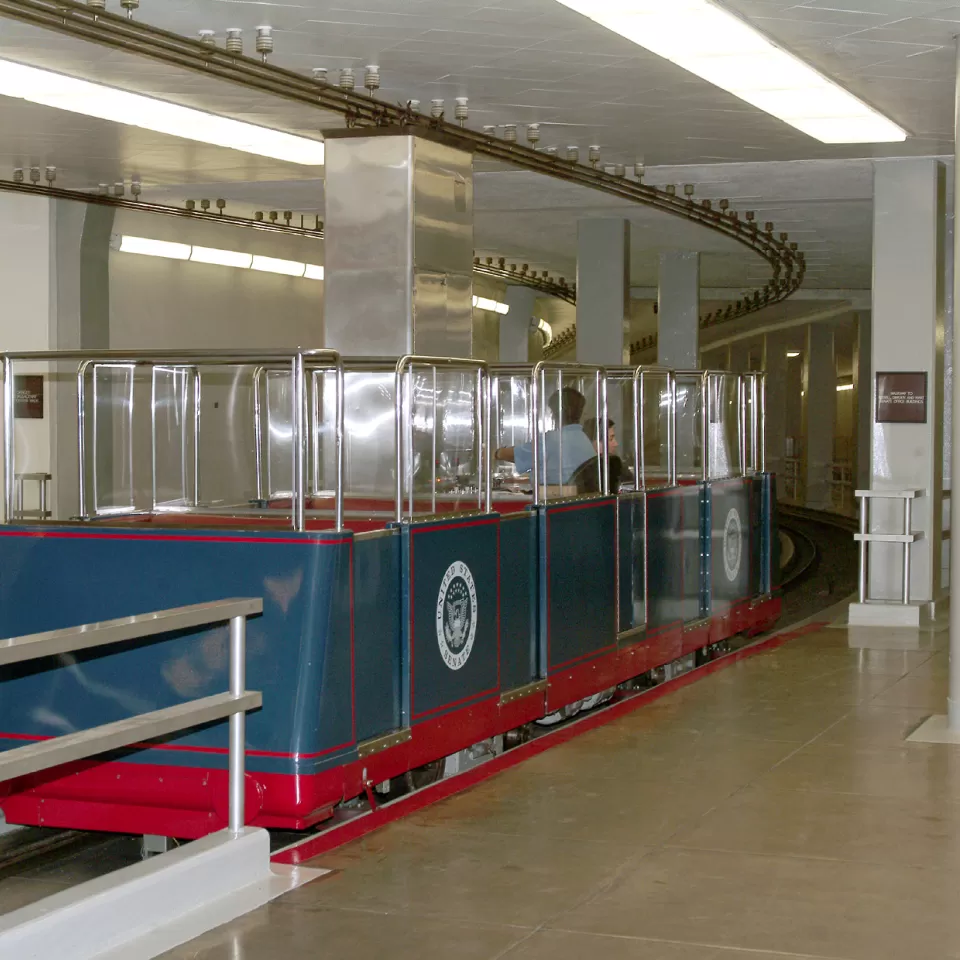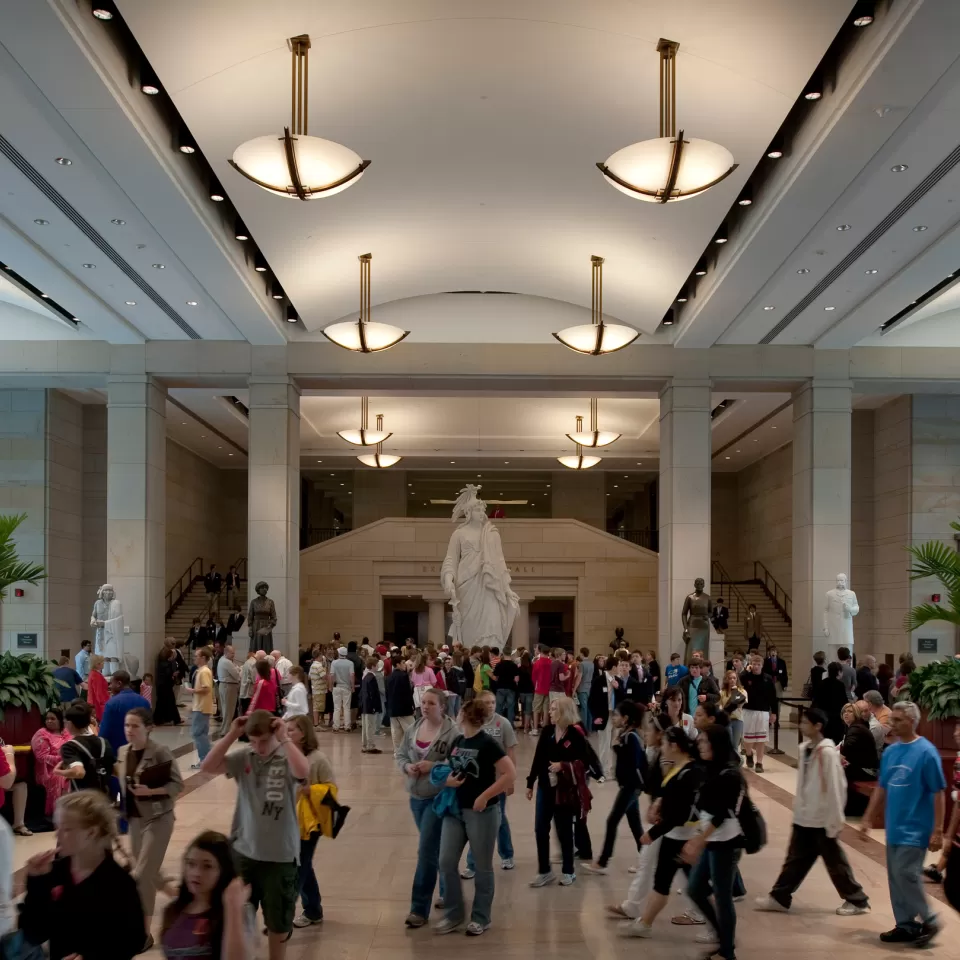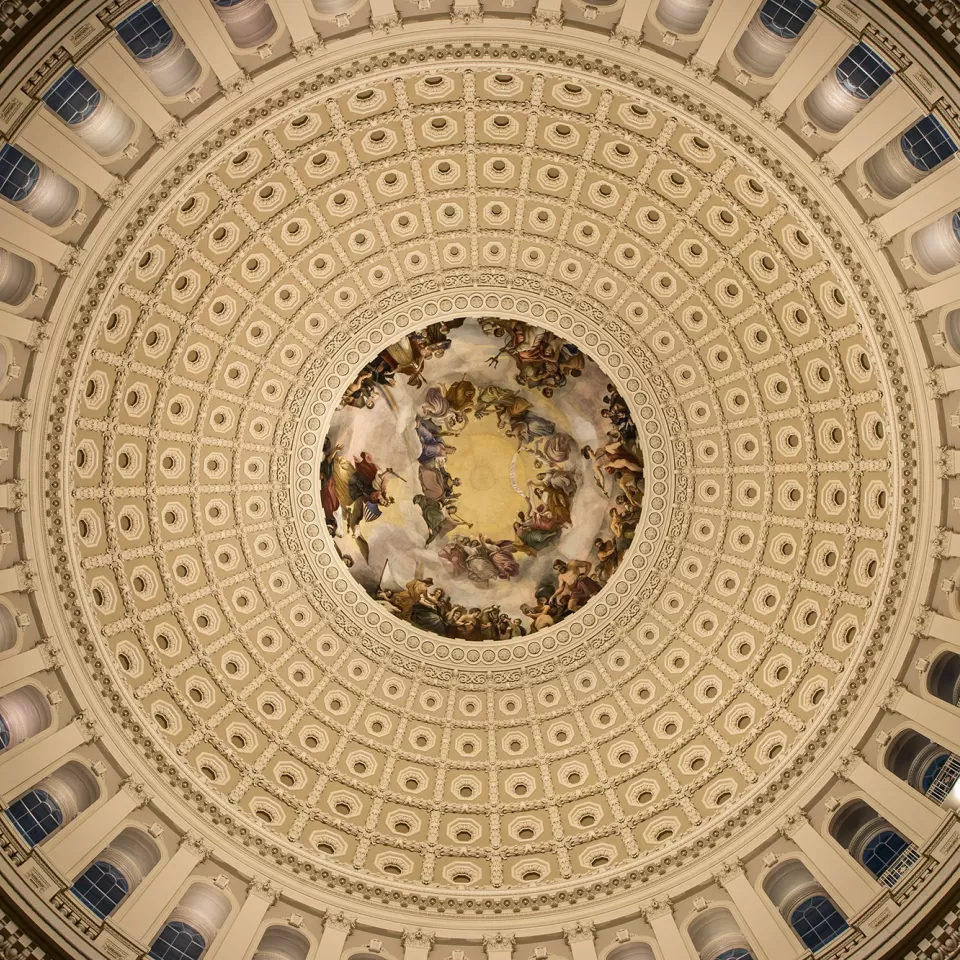Is anyone buried in the Capitol?
No. A tomb area was built for the remains of George Washington beneath the Crypt, but his will specified that he wished to be buried at his home at Mount Vernon, and his descendants honored this wish.
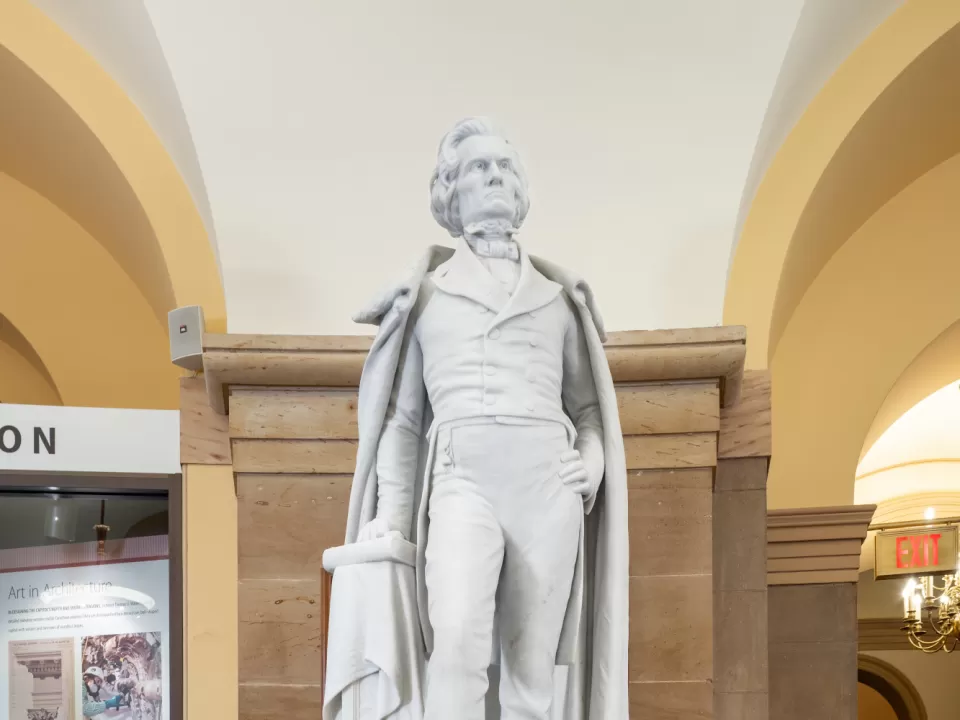
Highlight
John Caldwell Calhoun Statue
This statue of John Caldwell Calhoun was given to the National Statuary Hall Collection by South Carolina in 1910. Calhoun served as Vice President of the United States under Presidents John Quincy Adams and Andrew Jackson.
Image Gallery


U.S. Capitol Building
